All creatures are beautiful and deserve to live their lives. I get it, and I agree. However, the common house sparrow isn’t native here. Therefore, they can be invasive, often killing native birds to take over their nests. I have found easy, natural, and humane ways to discourage them from my yard. Here I share how.
This post contains affiliate links. For more information, see our disclosures here.
How to Deter the House Sparrow – 5 Easy and Natural Steps
The common house sparrow is an old world sparrow native to Eurasia and northern Africa. In Europe, they celebrate their population growth. In the United States, many consider them invasive and harmful to native birds.
They are not related to our native sparrows and are even shaped differently. They are actually not sparrows at all, but weaver finches.
I can’t tell you the number of reports of baby tree swallows, barn swallows, house finches, bluebirds, and house wrens killed by the common house sparrow. And I know there are many other species involved, these are just the most common nest box users here.
The house sparrow is very aggressive and will kill the native adults who are trying to protect their eggs or babies. This is heart-breaking.
The way I see it, the house sparrow can nest anywhere. They don’t need to take over my nest boxes, and I don’t want them on my feeders.
Yet I don’t have the heart to kill them like I know some do. I just can’t. They are just trying to live, but I still don’t want them here. I’ve spent over a decade learning how to deter them. I hope you find this helpful!
1. Feeder placement matters
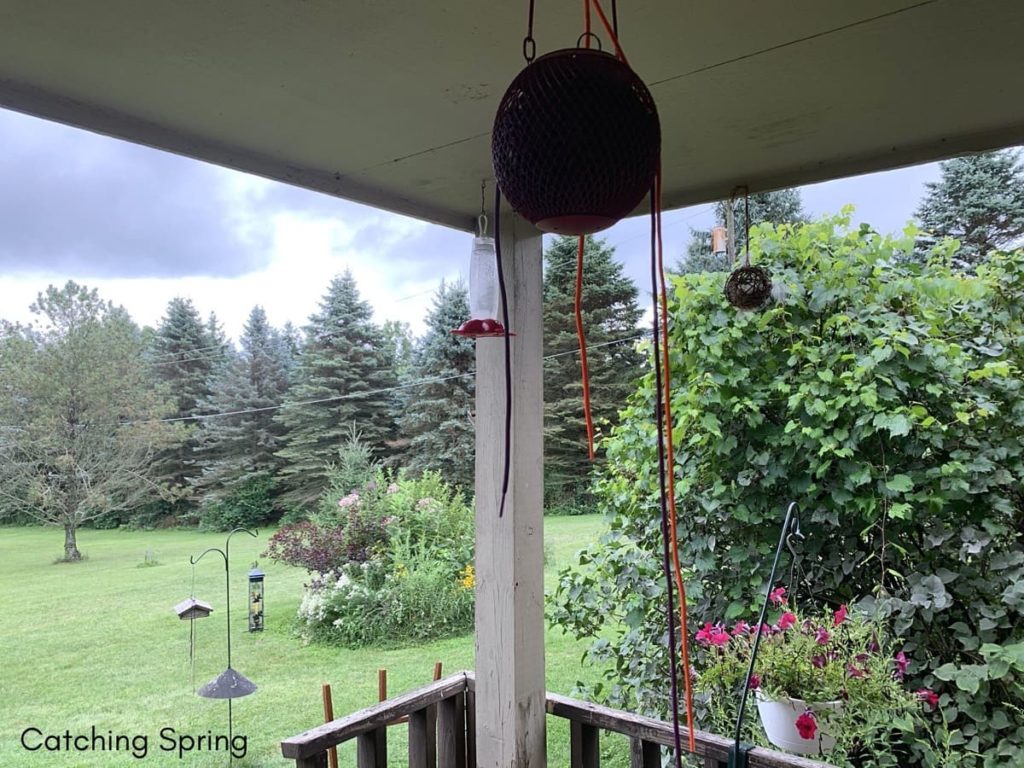
After spending so much time watching the common house sparrow, I have found what deters them from my feeders. Placement is a big one.
The house sparrow likes to land on feeders from on top or an open side. So any feeder hanging under a roof or board of some sort will be unattractive to them.
Granted, they will try to fly up to the feeder to get on, but would rather not. House sparrows also prefer feeders with larger perches and or open landing areas. They don’t care for my mesh feeders and find it difficult to land on my clinger feeder.
I only feed suet from upside-down feeders. The house sparrows will try to fly up to it and hover as they take a bite, but won’t easily land on them like the cage variety.
Feeders out in the open, as opposed to having rails, branches, or other “perches” nearby, are visited less.
PLEASE NOTE that by “out in the open,” I don’t mean out in the yard by itself, for then you will have hardly any birds! I mean a few feet from a tree instead of hanging from it.

I encourage you to try different areas and observe for yourself. You’ll see which feeder is readily landed on, and which is avoided until they get desperate enough to try.
I’ve found that sometimes just moving a feeder a couple of feet in another direction is all I need to do to deter them.
Every once in a while I’ve just had to stop feeding for a few days until they moved on.
2. The kind of seed you use matters
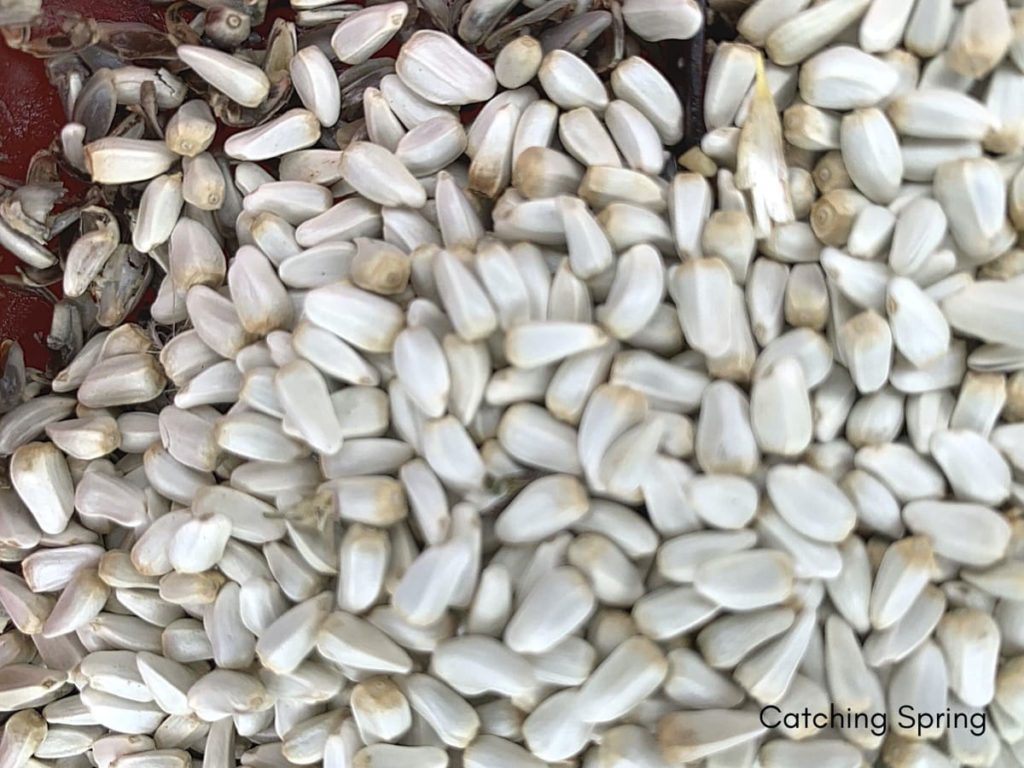
I used to feed the cheap mixed seed from my local grocery or feed store. I have found that this is basically “junk” food.
The common house sparrow loves this seed!
Unfortunately, they also love millet, which awesome birds like indigo buntings, towhees, juncos, and goldfinches like, to name just a few.
The first and only time I actually had an indigo bunting on my feeder instead of in the garden was when I had millet in my feeder.
I had to stop feeding it, though, as the house sparrow dominated that feeder.
Over the years, I have found that sunflower seeds, safflower seeds, and thistle seed (Nyjer) to be the best bet.
They’ll still eat the sunflower seeds, but I have never seen one on my thistle sock. I can also put safflower seeds on my platform feeder, as I have never seen the house sparrow on it, nor any bigger birds.
I place the sunflower seeds in the mesh feeders and the feeders hanging under the overhang on my front porch. It deters the house sparrow greatly.
They’ll eat under the feeders sometimes, but I don’t really care about that. Usually, my chickens naturally scare those stragglers away by trying to get the fallen seed themselves!
3. Use shoestrings on feeders
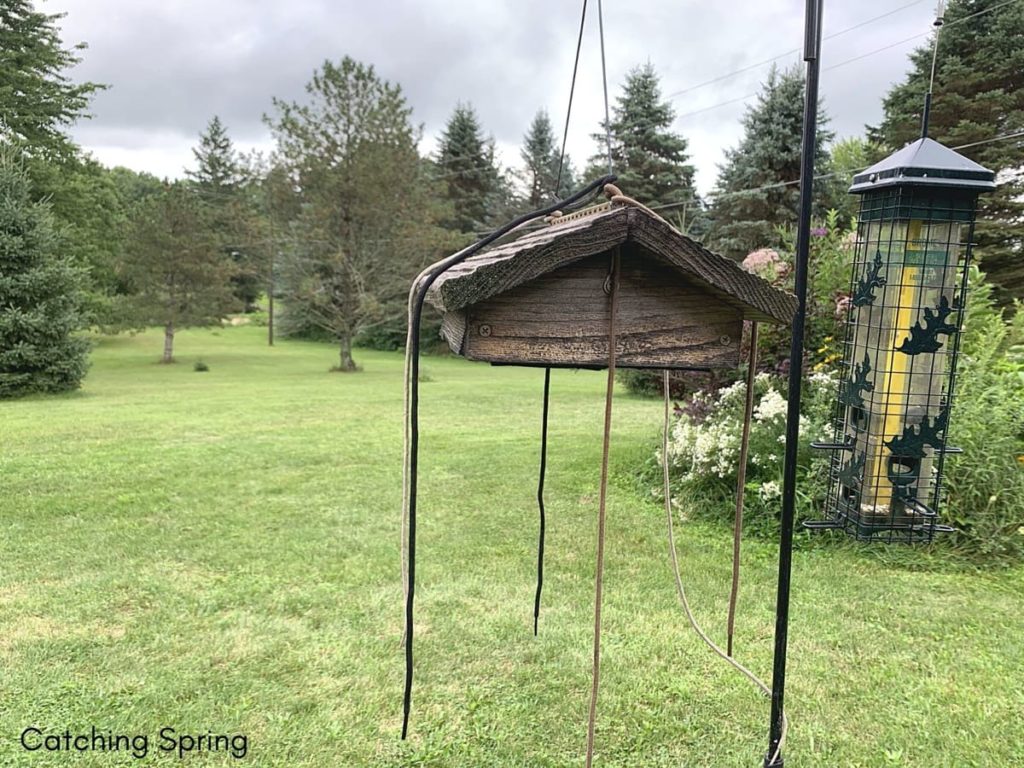
Okay, so this isn’t the prettiest deterrent, I know, but it totally works.
I put 2-4 shoestrings (color doesn’t matter) over my feeders, so they hang down. It deters 99% of the house sparrow, yet not one native bird has minded. If anything, they seem to like the shoe strings, as they often hang on them to eat.
Sometimes I have to move them around or add some shoestrings, but placing them over the feeders will almost always keep the house sparrow off them.
Remember to tie them onto the feeder, or they will just fall or blow off.
4. Monitor nest boxes
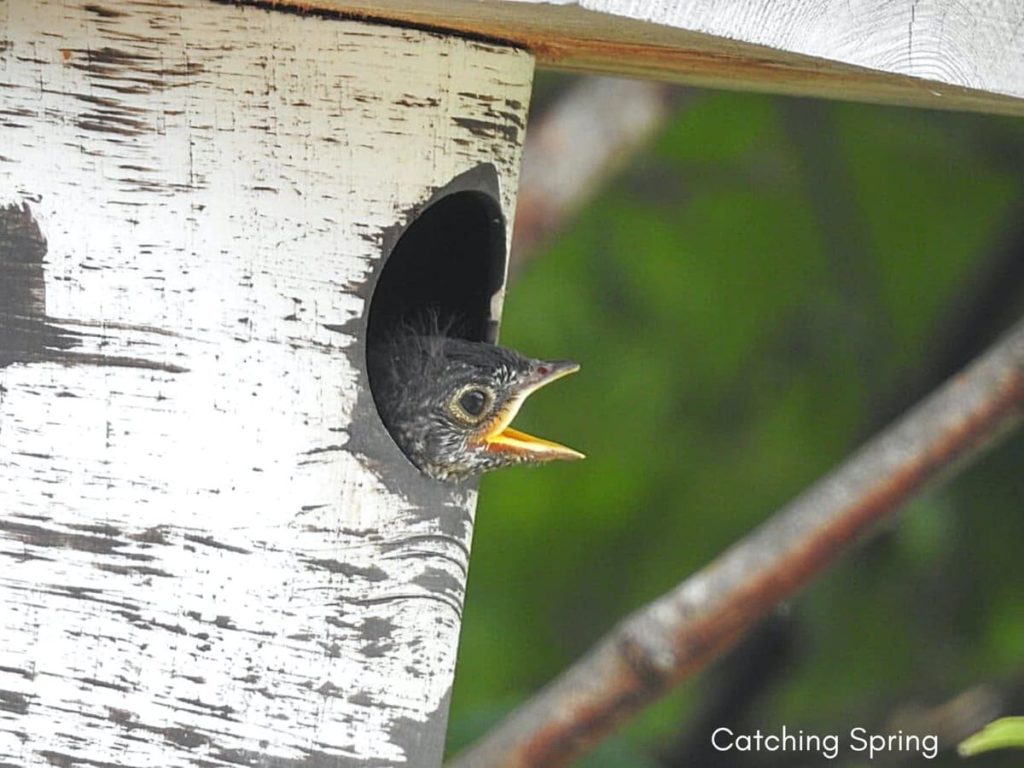
I have watched the house sparrow chase away and try to take over the nest boxes of my bluebirds, house wrens, and tree swallows.
They are aggressive by nature and extremely prolific.
The native birds will try to defend their area, but the house sparrow will always win. Even if it has to kill babies, parents, or destroy eggs.
It WILL take over.
Monitoring is essential to the lifespan and success of the native beauties that trust our man-made nest boxes.
To do this, I will just watch the boxes. If a house sparrow is moving in, you can lawfully destroy the nests. (they aren’t protected by law and nests can be thrown out) Native birds and their nests are protected.
I have never found babies, but if I did, I would never destroy them, I just can’t. But I do destroy the nests.

This summer, a male house sparrow was relentless in taking over a tree swallow nest to the point where the swallows stayed away.
I replaced the nest box with the Van Ert sparrow trap nest box and caught the male right away. I placed him in my Deluxe Repeating Sparrow Trap, with food and water, and caught a few more as they will always follow.
I then took them for a nice long drive and released them into a different area. Again, I just can’t kill the sparrows, but I don’t want them here.
I never had a problem with that nest box again.
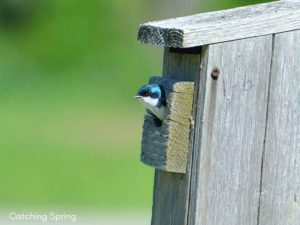
Any house sparrows around here will get to the point of flying away as soon as they see me or hear me. Compare that to all of my native birds, who usually just stick around if they see me.
Please note that if a native family is raising their babies in your nest boxes, they must be left alone. Too much interference could cause them to abandon their nest. To check nest boxes, I will simply observe them.
If I am uncertain, I will gently stick my phone into the top slot of the box and take a picture. I can then see the eggs to determine if they are house sparrow eggs or not.
It sounds like a lot of work, and maybe to some it is, but I think it’s worth it to ensure the survival of the native birds in my area. It’s a little labor of love.
5. Use humane sparrow traps
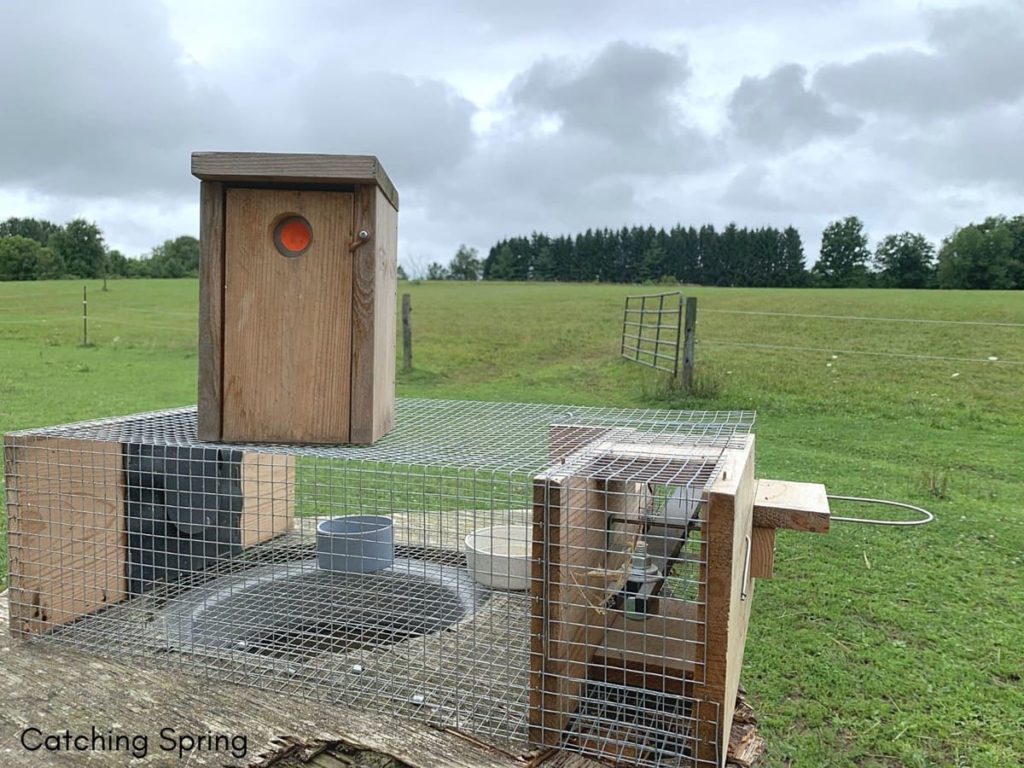
I hate trapping sparrows. My super-soft animal-loving heart feels bad for them, but I’ve seen the destruction they can cause.
Until I wised up to what was happening, they knocked all of my barn swallow babies out of their nests for two years in a row, killing most of them. It was heart-breaking.
Friends have found adult tree swallows and bluebirds dead in a box, pecked to death by house sparrows, and it’s just not pretty. So they must go and make a home elsewhere.
When all else fails, that’s where the sparrow traps come in at. There are two different, humane ones I use.
The easiest is the Deluxe Repeating Sparrow Trap. I place some millet seed on the base that attracts them, and without fail (except in spring for some reason), they’ll end up in the trap. I also have a little bowl of water and food for them, because I’ll leave it for a few hours to attract more.
I place this trap where I’ll most likely only catch house sparrows and no other native sparrows or other birds. If the native birds do get in there, I simply let them go and start over. (I have only had one native bird get trapped)
It must be monitored for this reason. Also, suffering isn’t cool at all, it’s about humane trapping, so again, monitoring is a must.
The directions say to kill them humanely, but again, whether I am “suppose” to let them go or not, I can’t kill. So that’s where the long drive comes in at.
House sparrows don’t travel too far for the most part, so I’m not worried about them coming back.
The other humane trap takes serious monitoring, for a bird can die in extreme heat very quickly in a closed-up nest box. This is the Van Ert Universal House Sparrow Trap.
Super easy to use, just be careful natives don’t get in there, for they will also check out the box and get trapped. Wisdom and attentiveness is a must for using this trap, in my opinion.
Remember, these invasive birds are celebrated in Europe, and they didn’t ask to be here. They are just trying to live their lives like any other bird. They just happen to be aggressive, invasive, non-native, and harmful to our natives’ success.
I am all for deterring this bird and do so as much as I can, but I am also all for respect for the living. So please be kind when you can.
I really hope this article was helpful and informative to you and will help you deter your house sparrow population.
These tips have really made a difference in how many hang out around here! My natives do thank me! 🙂
What are your thoughts about this subject? Please share them below. Thank you!
Leave a Reply